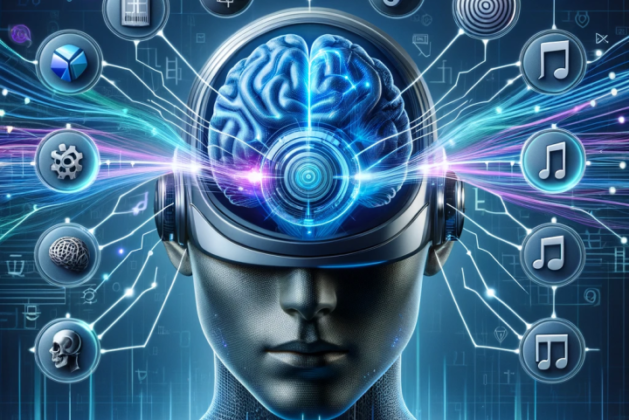Imagine a world where you could control your smartphone just by thinking about it. Picture effortlessly controlling a prosthetic arm or simply sending a text message without typing a single word. While this may sound like the stuff of science fiction, neurotechnology is making these possibilities closer to reality every day. Brain-Computer Interfaces (BCIs) are at the forefront of this technological revolution, opening doors to new ways of interacting with the world—and, perhaps, even redefining the boundaries of human potential.
Table of Contents
Introduction
Neurotechnology, particularly Brain-Computer Interfaces (BCIs), is no longer confined to futuristic films or research labs. In recent years, BCIs have evolved from theoretical concepts into tangible technologies with the power to transform industries ranging from healthcare to entertainment. So, what exactly are these devices, and how are they shaping the future?
At its core, a BCI is a technology that creates a direct communication pathway between the brain and an external device, allowing the brain to control machines without physical movement. It’s essentially like giving your brain the ability to send a text message or power a wheelchair, all without lifting a finger—or, well, moving anything at all. Let’s dive deeper into how this fascinating technology works and how it’s already changing lives.
What is Neurotechnology and How Do BCIs Work?
Neurotechnology is the study and application of devices that interact directly with the nervous system. Brain-Computer Interfaces are a subset of neurotechnology, designed to bridge the gap between the brain and external devices. The brain, as we all know, is a complex structure with billions of neurons constantly firing electrical signals. BCIs tap into these signals and translate them into actionable commands that machines can understand.
In simple terms: if your brain is sending a “move hand” signal, the BCI can pick up on that and, with the right technology, move a robotic arm. It’s like tuning into a radio station, except instead of music, you’re picking up signals that tell machines what you want them to do.
Types of Brain-Computer Interfaces
There are two main types of BCIs: invasive and non-invasive. Think of them like the difference between getting a tattoo and wearing a cool pair of wireless headphones.
- Invasive BCIs: These involve surgical implantation of electrodes directly into the brain. They offer highly accurate readings of brain activity but come with risks due to the surgical procedure. Typically used in patients with severe neurological conditions, invasive BCIs have shown promise in controlling robotic limbs and helping people with disabilities gain mobility.
- Non-invasive BCIs: These are the cool, less risky version, usually involving wearable devices like caps or headbands embedded with sensors. They read brain waves (using techniques like EEG) without needing surgery, making them safer and more accessible for everyday use. While they might not have the same precision as invasive devices, non-invasive BCIs are still able to control simple devices like cursors on a screen, or even enable direct communication with prosthetics.
Revolutionizing Healthcare and Medicine
BCIs are already playing a significant role in healthcare, especially in the treatment of neurological diseases and physical disabilities. Imagine a world where people with paralysis could regain control over their limbs or communicate with loved ones after years of silence.
- Restoring Mobility: One of the most groundbreaking uses of BCIs is in the restoration of mobility for individuals with spinal cord injuries. Through a combination of neural implants and external prosthetics, patients are able to control robotic limbs and regain some independence. It’s as close as we’ve gotten to the “thought-to-action” abilities you see in sci-fi movies.
- Neuroprosthetics: Prosthetic limbs have advanced to the point where they can be controlled by brain waves, allowing amputees to regain a level of functionality that was previously unattainable. Researchers are working on refining this technology so that the user can feel sensations like touch or pressure through their prosthetics, mimicking natural limb sensations.
- Treatment for Brain Disorders: BCIs are also being used to treat conditions like Parkinson’s disease, epilepsy, and even depression. Deep brain stimulation (DBS), which involves implanting electrodes in the brain, is helping people manage symptoms of these diseases by providing targeted electrical stimulation.
Enhancing Human Cognitive Abilities
While BCIs are often associated with medical applications, their potential goes far beyond healthcare. In fact, one of the most exciting possibilities is enhancing human cognitive capabilities. Imagine having a computer in your brain, allowing you to process information, learn new skills, or access knowledge instantly. Science fiction? Not anymore.
- Memory Enhancement: There’s research underway to develop BCIs that could enhance memory or help people with conditions like Alzheimer’s retain information. By stimulating specific areas of the brain, these devices could potentially help restore lost memories or improve cognitive performance.
- Human-Machine Symbiosis: In the future, BCIs may be able to integrate seamlessly with artificial intelligence (AI), allowing for instantaneous thought-to-action connections. This means we could control computers, smart devices, or even robotic assistants with nothing but our minds. The possibilities are as exciting as they are mind-boggling.
BCIs in Communication: Making the Impossible Possible
For individuals with severe physical disabilities or those who have lost the ability to speak, BCIs offer hope for communication. By analyzing brain waves, BCIs can help individuals “speak” through thought, allowing them to use a computer or device to express themselves in ways that were once impossible.
One example is the work being done to develop BCIs that allow people with locked-in syndrome (a condition where a person is fully aware but unable to move or communicate due to paralysis) to communicate simply by thinking. These devices translate thoughts into text or speech, potentially transforming the lives of millions of people with similar conditions.
Ethical and Privacy Concerns: Is Your Brain Data Safe?
As amazing as BCIs are, they come with a host of ethical and privacy concerns. After all, we’re talking about reading and interpreting brain activity—your thoughts, emotions, and maybe even your deepest secrets. What happens if this data falls into the wrong hands?
- Data Privacy: Since BCIs have the potential to collect sensitive personal data, there are concerns about how this information is stored and who has access to it. Would your thoughts be sold to marketers? Could hackers tap into your brain signals? The technology is advancing, but the laws and ethical standards surrounding it are still catching up.
- Security and Control: Just as a hacker could potentially access your personal data on your phone, it’s not too far-fetched to think that brain data could be hacked, too. Ensuring the security of these systems will be critical as they become more widespread.
The Future of Brain-Computer Interfaces: So, What’s Next?
The future of BCIs is incredibly exciting. We’re looking at a world where the lines between human and machine are becoming increasingly blurred. However, it’s important to remember that while the technology holds massive potential, there are still many hurdles to overcome. From improving the accuracy of non-invasive devices to ensuring ethical use, the next few years will be crucial in determining how BCIs will shape our lives.
Who knows? In a few decades, you might be able to browse the web, communicate, or control your home just by thinking. No typing, no scrolling—just pure thought. In the meantime, we’ll all have to settle for controlling the TV with a remote.
Conclusion
Neurotechnology and Brain-Computer Interfaces are on the verge of revolutionizing how we interact with the world and ourselves. From restoring mobility to enhancing cognitive abilities, the potential of BCIs is nothing short of extraordinary. But, as with any powerful technology, it’s essential that we proceed with caution, ensuring that the benefits of BCIs are realized while addressing the ethical and privacy challenges they present.
So, next time you find yourself thinking about your favorite Netflix show, just remember—somewhere out there, someone might be controlling a robotic arm with the very same thought. And, maybe, just maybe, that’s the future we’ve all been waiting for.
Read More: Unplug to Recharge: How a Digital Detox Can Boost Your Mental Health and Well-Being





Excellent article. It cleared up my doubts on the subject. I ask that you continue writing about this. I am following your blog and will definitely read all your future posts.